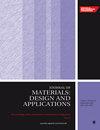Development of an in situ alloying method for high-performance welding processes to achieve an LTT effect by local modification of the alloy content
IF 2.2
4区 材料科学
Q3 MATERIALS SCIENCE, MULTIDISCIPLINARY
Proceedings of the Institution of Mechanical Engineers, Part L: Journal of Materials: Design and Applications
Pub Date : 2024-03-26
DOI:10.1177/14644207241240642
引用次数: 0
Abstract
One possible option for increasing the fatigue strength of welded joints is the use of so-called low transformation temperature (LTT) alloys. The aim is to introduce residual compressive stresses into the weld to counteract crack initiation and propagation. Until now, there has been no application of an LTT effect to high-performance welding processes such as the laser beam submerged arc hybrid welding process (LUPuS hybrid). First, the LUPuS hybrid single-wire process was further developed into the LUPuS tandem hybrid process. This makes it possible to equip the two submerged arc welding torches with different commercially available filler wires. The aim of the work is to further develop the LUPuS tandem hybrid welding process to enable the use of the LTT effect. The in situ alloying process for obtaining the LTT effect from commercially available material combinations was extended to the two-wire process. The alloy obtained was investigated by means of energy dispersive x-ray spectroscopy and hardness measurements and the influence on residual stresses was determined by the borehole method supported by electronic speckle pattern interferometry.为高性能焊接工艺开发原位合金化方法,通过局部改变合金含量实现 LTT 效果
提高焊接接头疲劳强度的一种可行方法是使用所谓的低转变温度(LTT)合金。其目的是在焊缝中引入残余压应力,以抵消裂纹的产生和扩展。迄今为止,LTT效应尚未应用于高性能焊接工艺,如激光束埋弧混合焊接工艺(LUPuS hybrid)。首先,LUPuS 混合单丝工艺进一步发展为 LUPuS 串联混合工艺。这使得为两把埋弧焊枪配备不同的市售焊丝成为可能。这项工作的目的是进一步开发 LUPuS 串联混合焊接工艺,以便利用 LTT 效应。从市售材料组合中获得 LTT 效应的原位合金化工艺已扩展到双丝工艺。通过能量色散 X 射线光谱法和硬度测量法对获得的合金进行了研究,并通过电子斑点模式干涉测量法支持的钻孔法确定了对残余应力的影响。
本文章由计算机程序翻译,如有差异,请以英文原文为准。
求助全文
约1分钟内获得全文
求助全文
来源期刊

CiteScore
4.70
自引率
8.30%
发文量
166
审稿时长
3 months
期刊介绍:
The Journal of Materials: Design and Applications covers the usage and design of materials for application in an engineering context. The materials covered include metals, ceramics, and composites, as well as engineering polymers.
"The Journal of Materials Design and Applications is dedicated to publishing papers of the highest quality, in a timely fashion, covering a variety of important areas in materials technology. The Journal''s publishers have a wealth of publishing expertise and ensure that authors are given exemplary service. Every attention is given to publishing the papers as quickly as possible. The Journal has an excellent international reputation, with a corresponding international Editorial Board from a large number of different materials areas and disciplines advising the Editor." Professor Bill Banks - University of Strathclyde, UK
This journal is a member of the Committee on Publication Ethics (COPE).
 求助内容:
求助内容: 应助结果提醒方式:
应助结果提醒方式:


